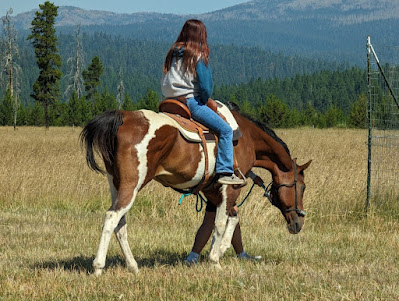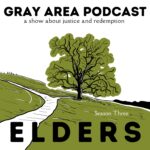Imprisoned for what exactly, you might ask... Being Indian was enough of a reason... TLH
Contested Native Artworks Resurface at Art Fair, Drawing Scrutiny

Earlier this year, David Nolan Gallery in New York mounted the exhibition Fort Marion and Beyond: Native American Ledger Drawings, 1865–1900, gathering over 100 works on paper by Native artists from the Arapaho, Cheyenne, Hidatsa, Kiowa, and Lakota tribes. Co-organized with Donald Ellis Gallery, the show prominently featured works by Nokkoist (Bear’s Heart) of the Cheyenne Nation and Ohettoint of the Kiowa Tribe, two of 72 Indigenous warriors who were imprisoned without trial at Fort Marion in Florida between 1875 and 1878 after the Red River War. The United States military campaign “aimed at the forced displacement and migration of Southern Plains tribes onto reservations,” according to a press release. Art critics called the show “plaintive, pathos-filled” and “heartbreaking,” and Hyperallergic’s John Yau remarked that “the drawings of Nokkoist and Ohettoit … belong in an art museum.”
What was not mentioned, by either the galleries or critics, is that the exhibition featured several drawings from ledger books that were auctioned off by Bonhams in Los Angeles in 2022. Representatives for the Kiowa and Cheyenne and Arapaho Tribes attempted unsuccessfully to halt the sale, based on the arguments that the ledger books represented “significant cultural patrimony” and were created by incarcerated artists, calling into question the “chain of custody of the objects,” as Chairman of the Kiowa Tribe Lawrence SpottedBird wrote in a letter to Bonhams.
The auction house did not disclose the identities of the buyer or buyers of the four books, which sold for a total of $908,700 including premiums. However, drawings by Nokkoist and Ohettoint were taken from three of the books — which had been unbound, and the artworks individually framed — and included in the Fort Marion and Beyond exhibition.
This past weekend, they were also featured in the Expo Chicago booth of dealer Donald Ellis, who confirmed to Hyperallergic that he was the buyer of those three books at Bonhams in 2022.

Members of the Kiowa and Cheyenne and Arapaho Tribes, as well as other Native individuals with knowledge of ledger drawings, reacted with alarm and frustration when they learned of the recent displays.
“When I read your email, my heart dropped,” Shannon O’Loughlin (Choctaw), the CEO of the Association on American Indian Affairs, told Hyperallergic. “It provides another level of evidence of how people are taking control of our cultural heritage, working to create their own narrative that is separate from the Native peoples who should be the true holders of this type of cultural heritage.”
“It just feels wrong that they’re here,” Debra Yepa-Pappan (Jemez Pueblo/Korean), co-founder and director of exhibitions and programs at the Center for Native Futures, a Chicago-based Native arts nonprofit that also had a booth at Expo.

Yepa-Pappan and her colleagues confronted Ellis at his booth, asking him where the ledger drawings came from and whether any Native groups or descendants of the artists were benefitting from the sales of the works the gallery was offering at the fair, which she says were priced between $8,000 and $80,000. She described his reaction as “defensive” and “rude.”
On Saturday, April 13, Casey Brown (Ho-Chunk), an artist and member of the Center for Native Futures, wrote an email to Expo Chicago staff, raising concerns about the ethics of selling ledger drawings at the fair.
“I was surprised to see ledger art outside of a tribal cultural center, museum or archive and also available for purchase,” his letter read. “This art was made under duress while these men were unjustly imprisoned; ownership of any of these works is problematic.”
When members of the Center approached Ellis and his assistant, they were “unable to explain where the collection came from and unwilling to let them copy down the names of who created these pieces for further study,” Brown said. “When asked if he had contacted any family of the unjustly imprisoned men, Ellis said he has ‘strong relations’ with ‘plains tribes’ but openly said he’s the only person profiting from these pieces.”
Within half an hour of sending the email, Brown was contacted by Tony Karman, the president and director of Expo Chicago, who spoke with members of the Center about their concerns.
“We are grateful to the Center for Native Futures for drawing our attention to the Ledger Books and to Donald Ellis Gallery for participating in a conversation with the Center around the complex issues involved,” a spokesperson for the fair told Hyperallergic. “Expo Chicago has committed to engaging with the appropriate organizations on the development of guidelines on the display of these types of materials, affirming our commitment to the proper handling of cultural property.”

Max Bear, the tribal historic preservation officer of the Cheyenne and Arapaho Tribes, echoed the Center’s dismay.
“When the books were sold, they became art pieces in Pratt’s narrative, not ours,” he told Hyperallergic, referring to Richard Henry Pratt, the Army officer who oversaw the prison at Fort Marion. Pratt commissioned and purchased many of the ledger books — which included depictions of battle, the warriors’ journey as detainees from the Plains to Florida, and prison life — directly from the incarcerated artists, considering them examples that his attempts to assimilate and “civilize” Native Americans were successful.
Bear bristled at the term “ledger art,” adding: “These are historical accounts from our people, and should be kept by our people.”
Although there has been a growing movement over the past several years towards repatriation of objects, art, and artifacts to Native Peoples, the ledger books reside in a legal gray area, said Ross Frank, a professor in the Department of Ethnic Studies at the University of California San Diego (UCSD).
“In the letter of law, as it stands now, it’s a hard row to ask all ledger material to go back to the tribes. It is a kind of cultural patrimony, but in these cases, there was some kind of sale, which was legal at the time,” Frank told Hyperallergic. But the works’ legal status aside, Frank noted, “there may be ethical concerns about coercion” because the artists were imprisoned.
Frank explained that there are seemingly two systems that apply to US cultural institutions on the one hand, and private dealers on the other. Institutions should adhere to best practices, involving consulting with tribes regarding the exhibition and responsible stewardship of objects related to their culture.

The tribal historic preservation officers of the Kiowa and Cheyenne and Arapaho Tribes told Hyperallergic that they had not been contacted by either gallery prior to the exhibition.
According to Ellis, he was approached by “an intermediary on behalf of the Kiowa” after the auction and offered them the ledger book with drawings by Ohettoint at his cost (it was sold for $138,975 with premium), but received no response. He added that his gallery is “supporting financially and with loans” an upcoming exhibition on Fort Marion which “dozens of direct descendants of the Cheyenne prisoners” are involved with.
“They are aware of my activities and involvement in the exhibition and we are not aware of any pushback,” Ellis said.
But as Frank of UCSD explained, “with private collectors, it’s a whole different world. We’re at the mercy of a global capitalist system…which values the pages separately far more than the book staying together,” he said about the decision to unbind the books and display the drawings separately. (Frank is the founder of the Plains Indian Ledger Art (PILA) project, which digitizes complete ledger books, making them accessible online.)
Ellis defended the choice to detach the drawings, arguing that “one of the unique aspects of the Fort Marion sketchbooks is that there is no narrative arch between individual sheets, linear or otherwise, unlike most books that predate them.”
Karen Kramer, the curator of Native American and Oceanic Art and Culture at the Peabody Essex Museum, offered a counter perspective, telling Hyperallergic that “to separate these drawings is to dismantle cultural heritage.”
“Breaking apart ledger books that have Plains Indian drawings short-changes the possibility of understanding each drawing as a part of a whole story,” Kramer said. “In the context of Fort Marion, these prisoner-warrior artists conveyed personal experiences and remembrances of tribal rituals and histories within the broader story of colonization and ledger art production under imprisonment and its radical aesthetic evolution between 1875–78.”

It is also worth noting that at least two drawings that were originally two-page spreads in the ledger books were framed and exhibited as single sheets, splitting the original image in half, at Ellis’s Expo Chicago booth.
In his communications with Hyperallergic, however, Ellis made clear that he considers himself more as a caretaker than a dismantler of Native cultural heritage.
“With the possible exception of Ross Frank and PILA, my gallery was most instrumental in the preservation of complete ledger books over a 20-25 year period before the advent of digitization,” he said. “The decision to exhibit the drawings as individual works (our first experience in doing so) was a long and difficult process. Ultimately we decided the end justified the means.” That end aim, according to Ellis, is “to bring them to widespread institutional and private attention.” He noted that PILA has complete files of the three books he purchased and that he plans to produce facsimile versions.
Institutions that receive federal funding are bound by the Native American Graves Protection and Repatriation Act (NAGPRA), a 1990 law which facilitates the “protection and return of Native American human remains, funerary objects, sacred objects, and objects of cultural patrimony.” Private sales are not subject to NAGPRA, but they do fall under the recently passed Safeguard Tribal Objects of Patrimony (STOP) Act, which helps prevent international trafficking of objects of significant cultural patrimony, although that legislation would likely not apply in this case.
Despite the technical legality of the books’ ownership, O’Loughlin sees the original terms of the sales by the incarcerated Native artists to Pratt as reason to reconsider grounds for repatriation.
“If the original transfer does not hold up, if it was considered a kind of theft, then every transaction after that would be colored by that,” O’Loughlin said. She considers the books’ current owners complicit “because they know all the history, they know how the Tribes fought the purchase.”






 This season, we’re hearing from elder survivors of systemic injustice and historical trauma. They’re showing newer generations what they’ve learned about how to address and prevent those kinds of harm.
This season, we’re hearing from elder survivors of systemic injustice and historical trauma. They’re showing newer generations what they’ve learned about how to address and prevent those kinds of harm. 















